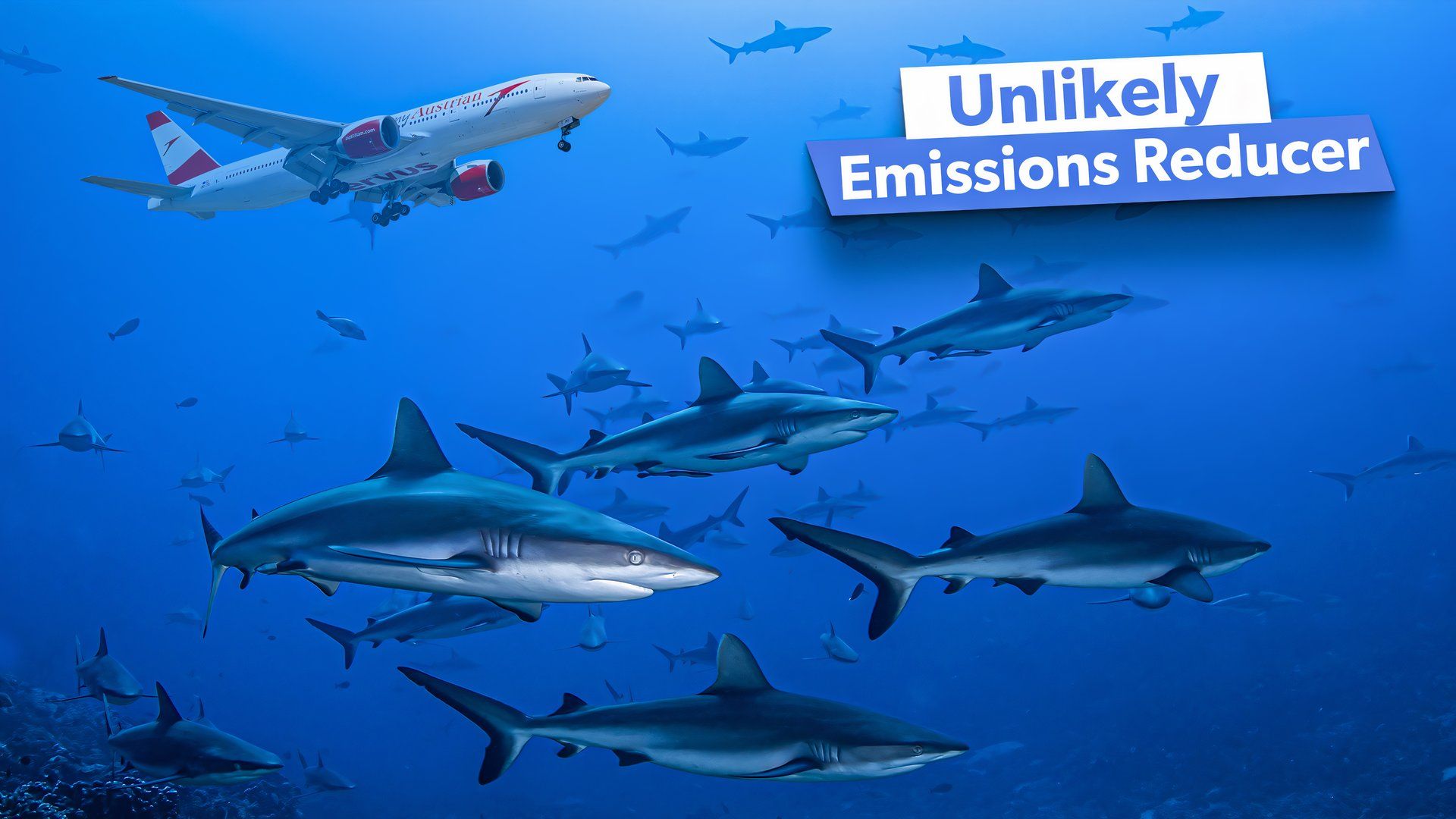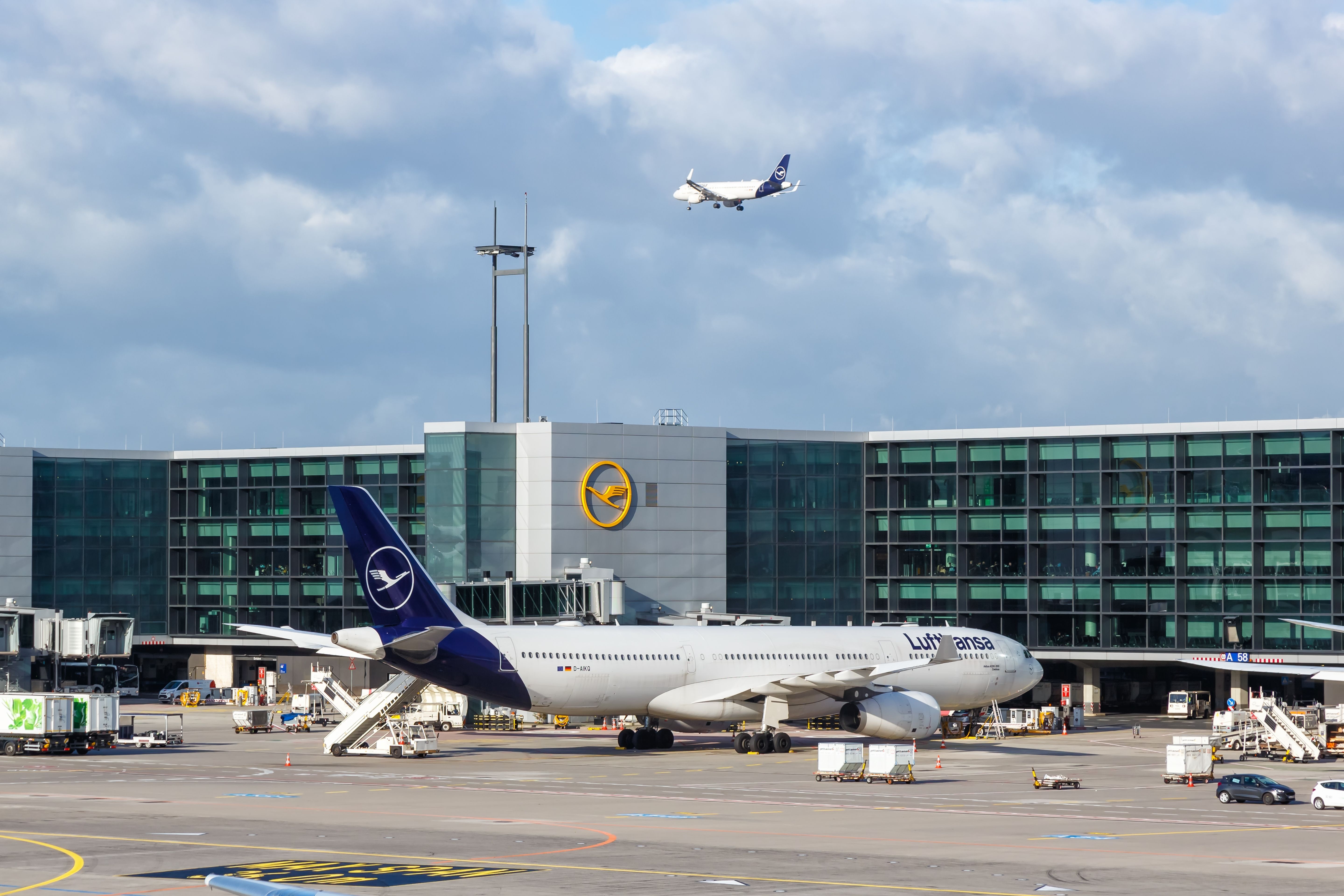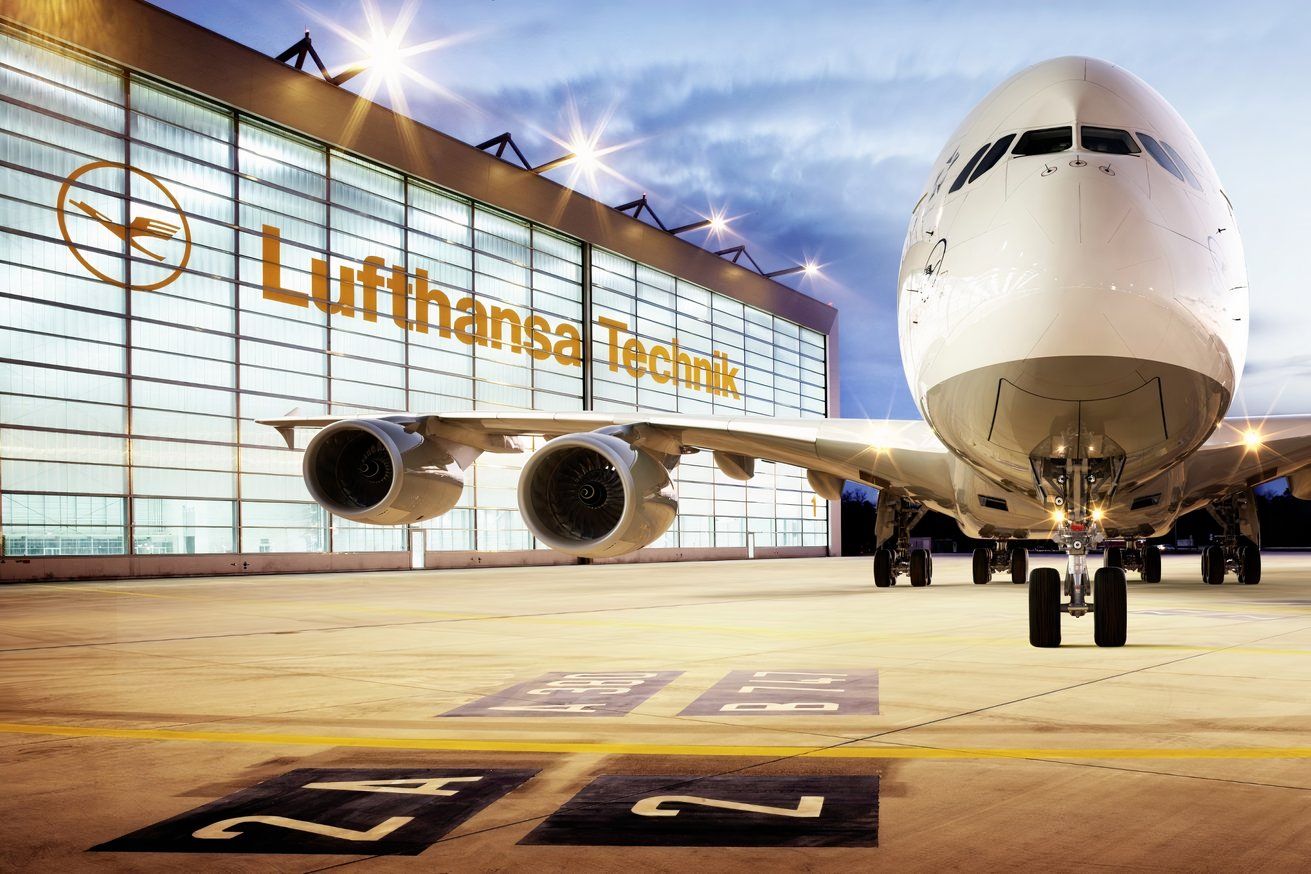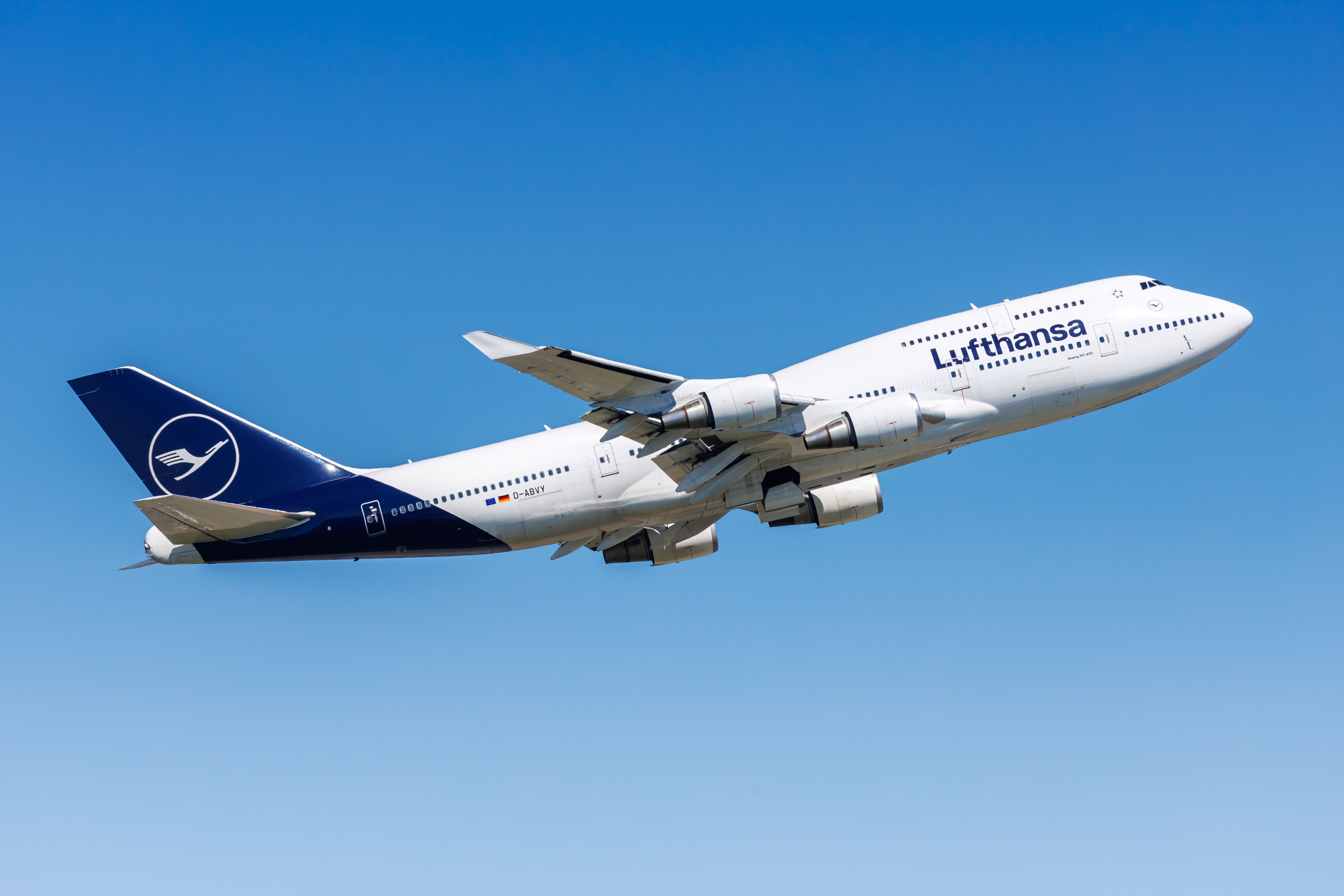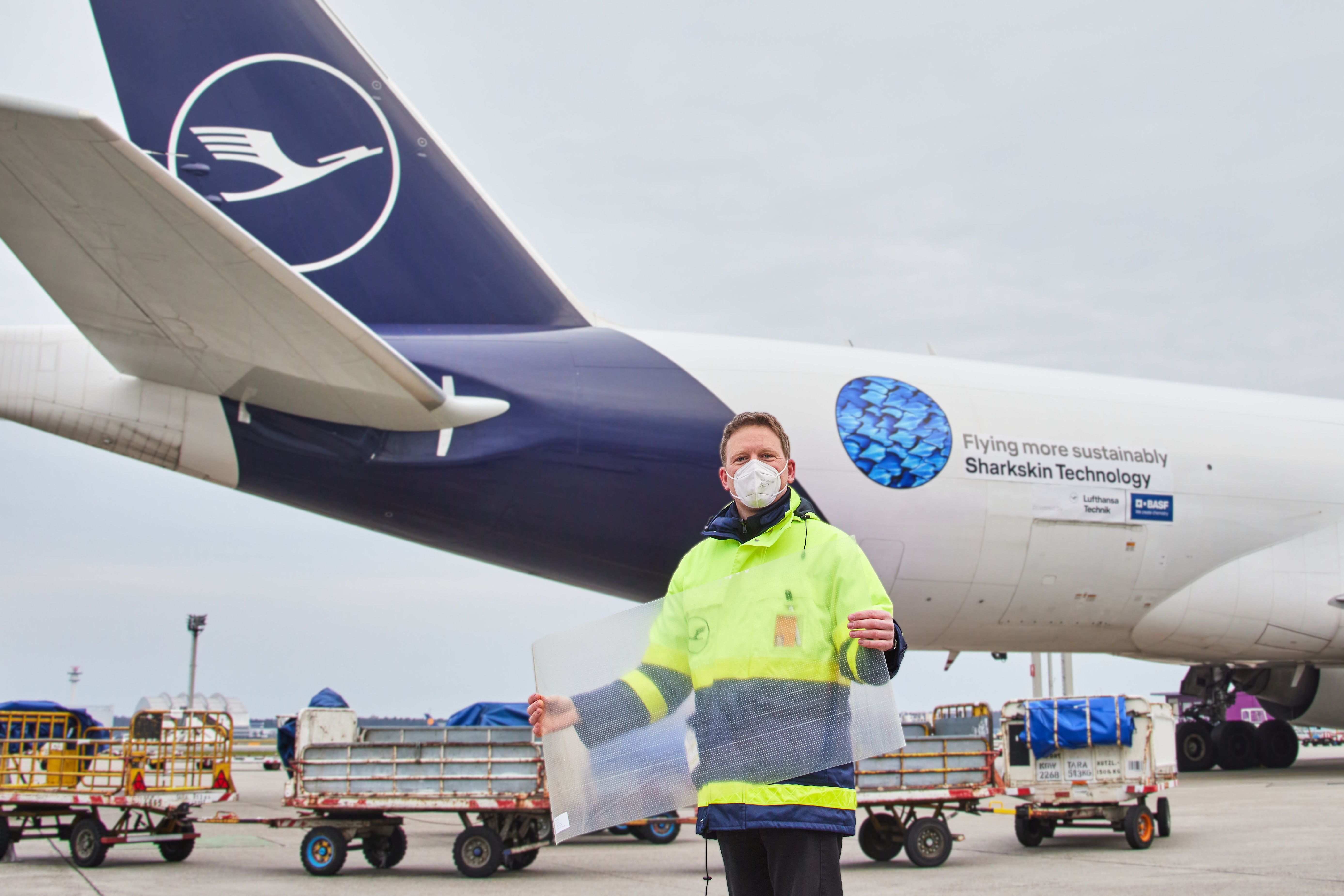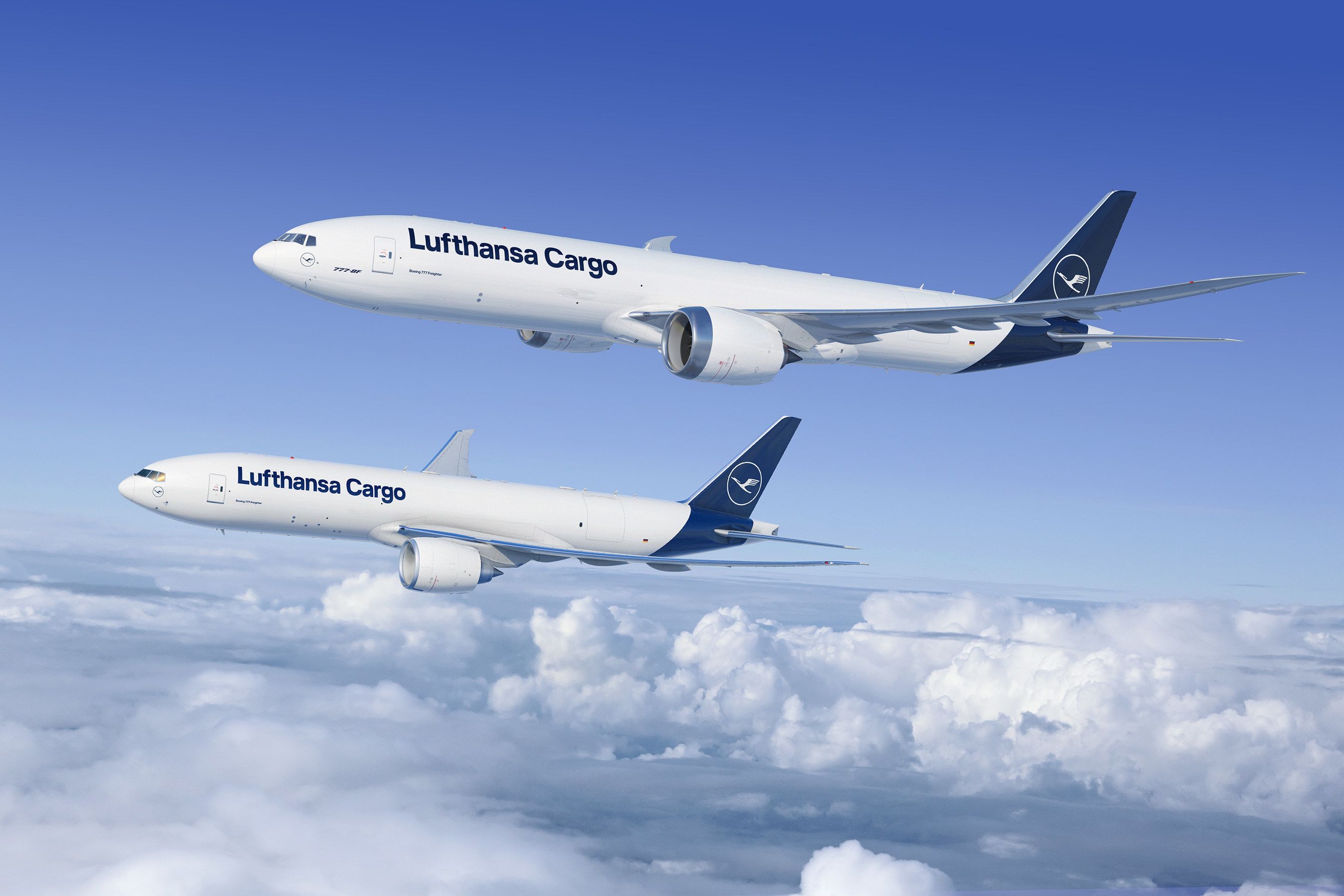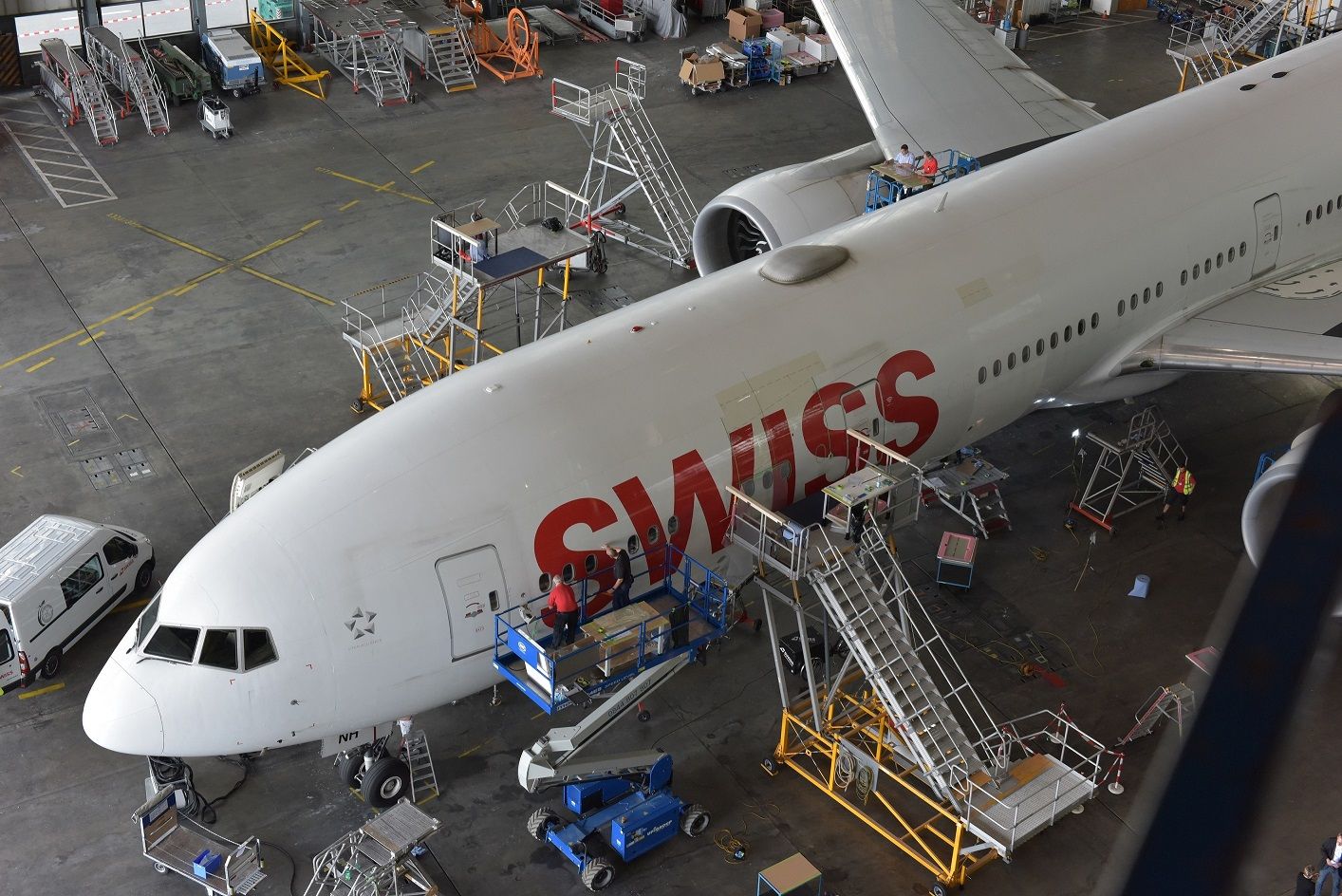Summary
- Sharkskin-inspired AeroSHARK technology reduces aircraft emissions by about 1%, offering significant fuel and cost savings.
- Adapting nature’s design, Lufthansa’s embrace of AeroSHARK technology is a crucial step towards meeting ambitious carbon-neutral targets.
- The AeroSHARK technology has now been applied across the numerous aircraft in the Lufthansa, SWISS and Austrian Airlines fleet.
Nature has often inspired solutions to technological problems. The flight of birds motivated aviation pioneers for centuries, but more recently, another animal has inspired new technological advances in aviation. Sharks are nature’s true masters of drag reduction, and their unique skins are proving to be a catalyst for new advances in aviation emissions reduction, where the Lufthansa Group is leading the way.
Photo: Markus Mainka | Shutterstock
Adapting nature’s perfect design
If you run your hand from a shark’s head to its tail, it feels smooth, almost like suede. Reverse the direction, and it feels rough like sandpaper. This is because shark skin comprises ribbed, dragonesque scales layered over each other like shingles on a roof, and their ribbed and layered pattern guides water across the shark’s body, dramatically reducing friction and drag.
Humans have been trying to adapt this perfect design for decades. The first relevant designs that emulated shark skin were swimsuits used by professional swimmers.
More recently, Lufthansa Technik and BASF teamed up in 2019 to explore the same principles for aviation, seeking to lower the frictional resistance of an aircraft and, therefore, its fuel consumption.
Photo: Lufthansa Technik
Creating AeroSHARK
Lufthansa’s motivations were simple. The group (which includes Lufthansa, SWISS, Austrian Airlines, Brussels Airlines, and Eurowings) has set itself an ambitious target of halving its 2019 emissions rate by 2030 and being carbon-neutral by 2050. While adding more fuel-efficient aircraft to the fleet is crucial, it needs to find multiple avenues for carbon reduction, such as joining Airbus’ carbon-removal initiative.
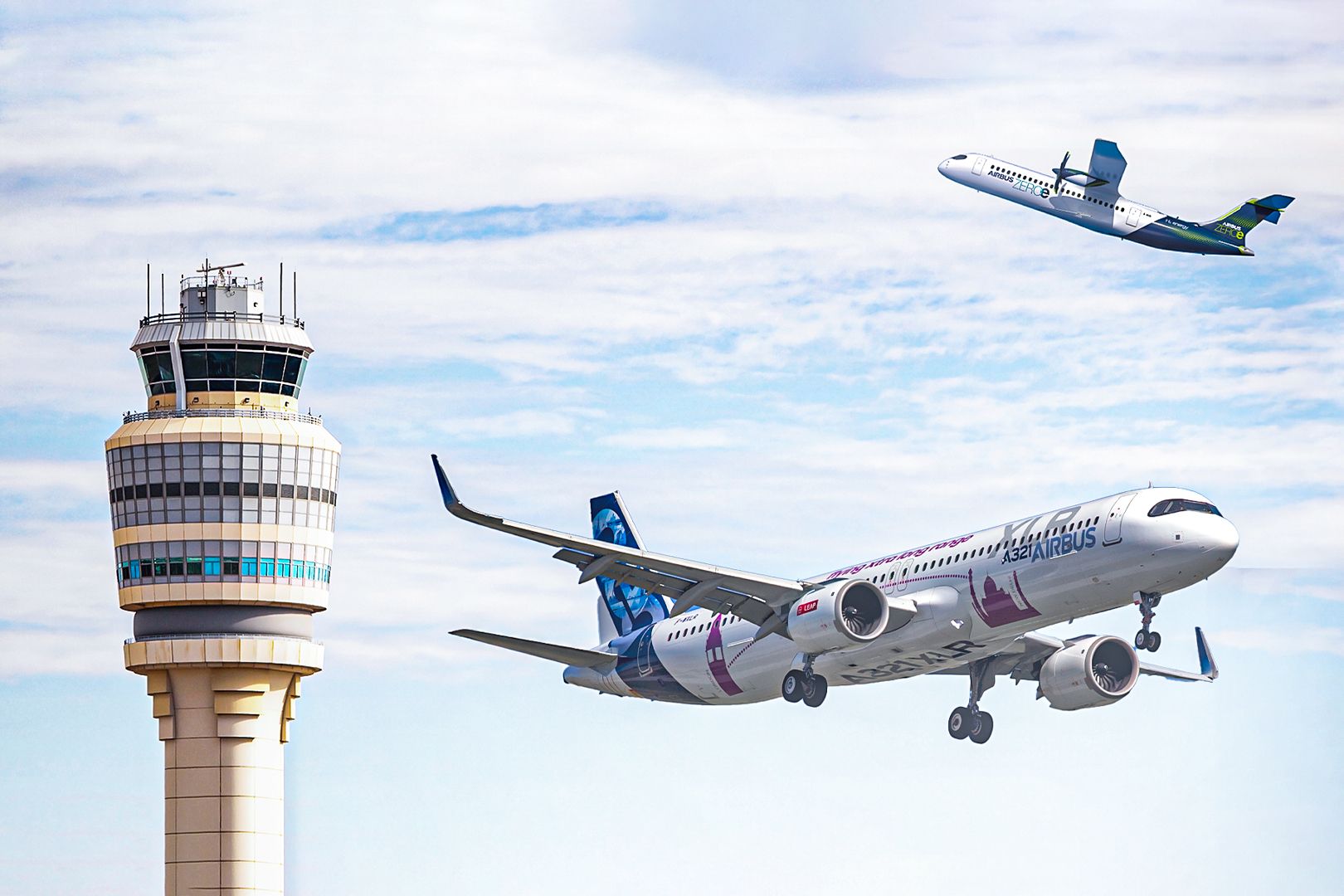
Related
Sustainability: Here’s How Airbus Is Working Towards Net-Zero By 2050
Airbus spoke to Simple Flying about hydrogen-powered aircraft, the A380, and its yearly $2 billion investment in sustainable innovations.
As a result, Lufthansa Technik and BASF went through several iterations of sharkskin-like concepts, testing them by gluing artificial shark skin to the underside of a Lufthansa Boeing 747-400. Initial tests showed great promise, delivering a 0.8% reduction in emissions, and by early 2021, Lufthansa announced that it was ready to roll out the new product – christened AeroSHARK – across the group’s fleet.
Photo: Markus Mainka | Shutterstock
How does it work?
AeroSHARK consists of adhesive bionic films with a barely perceptible texture of small ribbed protrusions called riblets. Sized in patches for easy and targeted application, the film has millions of these prism-shaped riblets, each around 50 micrometers high.
Applied to the aircraft to align with the airflow, the riblets achieve efficiency gains by reducing skin friction and drag and improving lift if attached to the wings.
Photo: Lufthansa Cargo
The AeroSHARK material is also designed to be highly resilient, able to withstand significant temperature shifts and pressure differentials, as well as higher ultraviolet radiation on high-altitude flights. It is also certified to have a durability of greater than four years, although this might be an understatement and will be verified further as its usage within the Lufthansa Group fleet continues.
Rolling it out
While the COVID-19 pandemic caused some program delays, Lufthansa Technik and BASF were ready to roll out the technology across the fleet. It has carried this out across three airlines in the group.
Lufthansa
Approximately 800 square meters of AeroSHARK film was applied to the fuselage and engine nacelle surfaces of Lufthansa’s four Boeing 777Fs. Testing showed that emission reductions were even more significant than with the Boeing 747-400 testbed, with the B777s achieving a 1.1% reduction.
Photo: Boeing
Dorothea von Boxberg, CEO of Lufthansa Cargo, commented on the success of the program:
“We are proud to be able to operate our entire freighter fleet even more efficiently in the future thanks to AeroSHARK technology and to further reduce the carbon footprint of our fleet. Our investments bring us closer to our goal of being 100% carbon-neutral in the air by 2050; on the ground, we would like to achieve this goal as early as 2030.”
SWISS
In 2022, the Swiss airline began applying AeroSHARK to its entire fleet of twelve Boeing 777-300ERs. These aircraft are more significant than the Lufthansa B777Fs, so they require 950 square meters of film. This deployment also allowed Lufthansa Technik to prove the technology on passenger aircraft where allowances need to be made for windows.
Photo: SWISS
Austrian Airlines
Most recently, Austrian Airlines announced that it will apply AeroSHARK to four of its six Boeing 777-200ERs in the winter of 2024, adding to the 17 AeroSHARK-equipped aircraft already in the Lufthansa fleet.
Photo: Oliver Roesler | Austrian Airlines
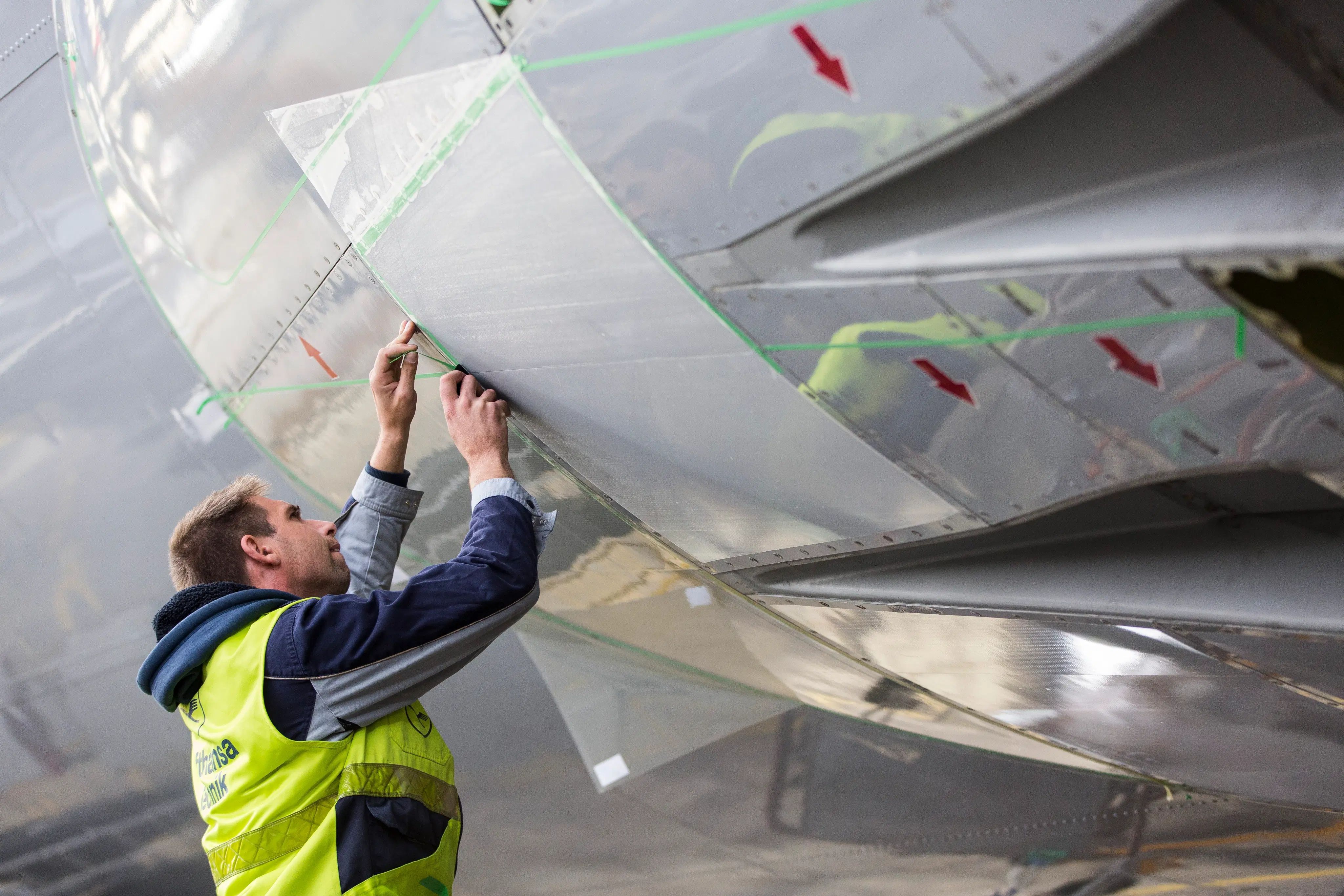
Related
Austrian Airlines 777-200ERs Will Cut CO2 Emissions Using AeroSHARK
Lufthansa Technik is adding the Boeing 777-200ER to its AeroSHARK family, with four from Austrian Airlines being modified with sharkskin riblets.
Impressive results
By June 2024, Lufthansa Group had logged over 100,000 flight hours across its aircraft modified with AeroSHARK and has reported some impressive results:
- Emissions reductions: On average, emissions reductions have exceeded 1%, which equates to an annual reduction of nearly 1,200 metric tonnes of carbon emissions per aircraft.
- Fuel savings: AeroSHARK’s efficiencies have allowed for an annual reduction of 370 tonnes of fuel per aircraft.
- Cost savings: If the emissions reductions were not enough of a motivator, the annual fuel cost savings equate to more than $250,000 per aircraft, which ensures that the investment in AeroSHARK delivers an ROI in about 18 months.
- Fleet efficiency: With only 17 of its fleet equipped so far, Lufthansa calculates that it has already saved 6,000 tonnes of fuel and 19,000 tonnes of carbon emissions.
- Global opportunity: The estimated potential annual savings for the global commercial fleet with AeroSHARK is 2 million tonnes of fuel and 6.3 million tonnes of carbon emissions, resulting in $1.2 billion in annual savings across the industry.
Looking to the future
The future of AeroSHARK looks positive as ever-more global airlines seek to reduce their carbon footprints and meet emissions targets. Every 1% reduction helps, especially when full order books at manufacturers and supply chain delays mean that step-up improvements with new aircraft are less easy to obtain.
Lufthansa Technik says that it is in late-stage discussions with multiple airlines that are interested in using AeroSHARK, so stay tuned to Simple Flying as we track the growing use of this innovative technology.

